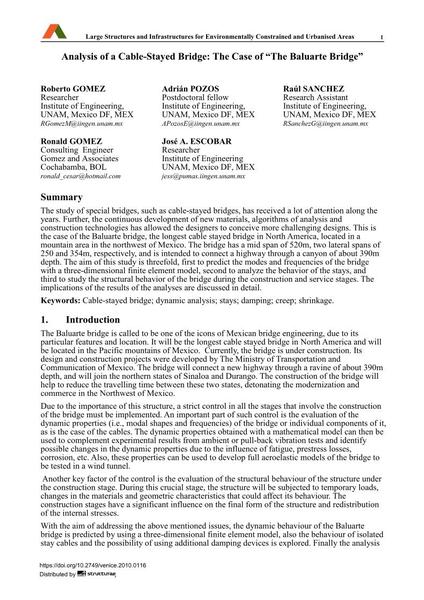Analysis of a Cable-Stayed Bridge: The Case of "The Baluarte Bridge"

|
|
|||||||||||
Bibliographic Details
| Author(s): |
Roberto Gomez
Adrián Pozos Raúl Sanchez Ronald Gomez José A. Escobar |
||||
|---|---|---|---|---|---|
| Medium: | conference paper | ||||
| Language(s): | English | ||||
| Conference: | IABSE Symposium: Large Structures and Infrastructures for Environmentally Constrained and Urbanised Areas, Venice, Italy, 22-24 September 2010 | ||||
| Published in: | IABSE Symposium Venice 2010 | ||||
|
|||||
| Page(s): | 116-117 | ||||
| Total no. of pages: | 8 | ||||
| Year: | 2010 | ||||
| DOI: | 10.2749/venice.2010.0116 | ||||
| Abstract: |
The study of special bridges, such as cable-stayed bridges, has received a lot of attention along the years. Further, the continuous development of new materials, algorithms of analysis and construction technologies has allowed the designers to conceive more challenging designs. This is the case of the Baluarte bridge, the longest cable stayed bridge in North America, located in a mountain area in the northwest of Mexico. The bridge has a mid span of 520m, two lateral spans of 250 and 354m, respectively, and is intended to connect a highway through a canyon of about 390m depth. The aim of this study is threefold, first to predict the modes and frequencies of the bridge with a three-dimensional finite element model, second to analyze the behavior of the stays, and third to study the structural behavior of the bridge during the construction and service stages. The implications of the results of the analyses are discussed in detail. |
||||
| Keywords: |
cable-stayed bridge damping creep dynamic analysis shrinkage Stays
|
||||
